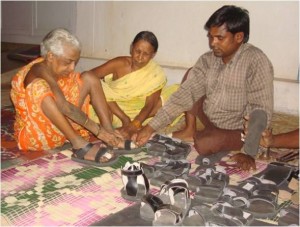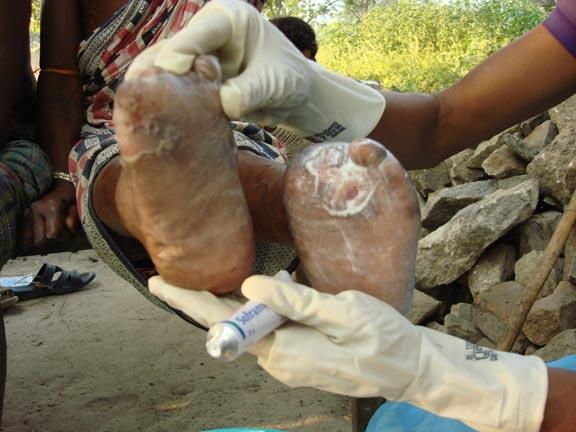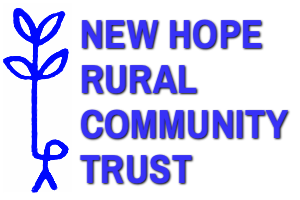Leprosy Field Report, Leprosy is a bacterial disease that statistically affects about 4% of any population. It is a bacteria that damages the nerves close to the skins’ surface. It prefers the cooler regions of the nose. It infiltrates several major nerves such as the Ulnar at the elbow which causes clawed fingers. The loss of sensation in fingers, hand / toes and feet is the major cause of deformity in India. Women burn their fingers while cooking as they cannot feel the heat. Men develop blisters while doing labour work and don’t feel the pain. The story and picture of Leprosy has, and is, changing at many levels, particularly with medical drugs. It is possible to say that even the severest case can be basically cured within two years. The cases that are infectious can become negative in 6 to 12 weeks. Several of the Trustees were members of a team that took part in India’s first ‘once monthly’ Rifampicin drug trials which later became a standard regime adopted by WHO and the Government of India. Leprosy Field Report: It is not the medical side that causes our Trust the greatest concern, worry and at times shame. It is the mental and social attitude of our society, steeped in centuries of cultural taboos. A society that sees diseases such as Leprosy as the result of ‘sin’.
Leprosy Field Report
There are few countries in the world that have escaped the effects of Leprosy at some time in their history. Today it is confined to a few pockets of Europe, most ‘south’ developing countries. Of the estimated 12 million patients, 4 million live on the Indian sub-continent.
Where societies are highly literate and have high levels of schooling there is a justification for not using the stigmatizing word “Leprosy” but the medical term Hansen’s Disease after the Norwegian who identified the bacteria.

Leprosy Field Report: Unfortunately in India, where only a minority speak English, where illiteracy is more common than literacy, where regional languages and dialects all have a specific name for Leprosy there is – at this time – very little chance of changing the ‘word’. It is not the word that causes the problem in India. It is the telltale signs of Leprosy on the skin. Leprosy clinics are filled with people wanting to be told that the ‘skin patch’ is anything, no matter what, but Leprosy.
Working for Change
Visitors often ask, friends write – “Are you attempting too much? Are you too diversified?”
The answer is No, because there is no simple answer to changing poverty, to sustainable development – to CHANGE.
Leprosy Field Report: We often quote from a book by Professor David Morley and Hermione Lovel – “My Name is Today” – We cannot say to the Leprosy patients standing in front of us ‘naked’, or to the disabled child, or the expectant mother – “Tomorrow”. Their need is Today, whether we have a budget for them or not, their need, their plea, their out stretched hand, is today.
Because there is no single answer to these problems we work not vertically but horizontally.







